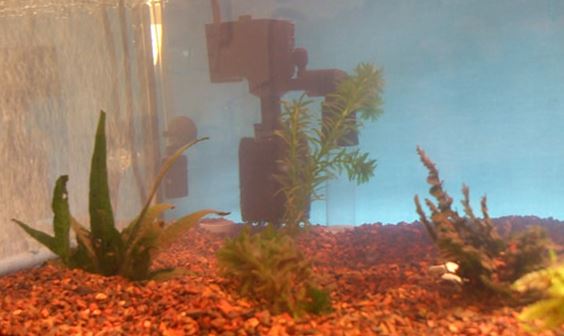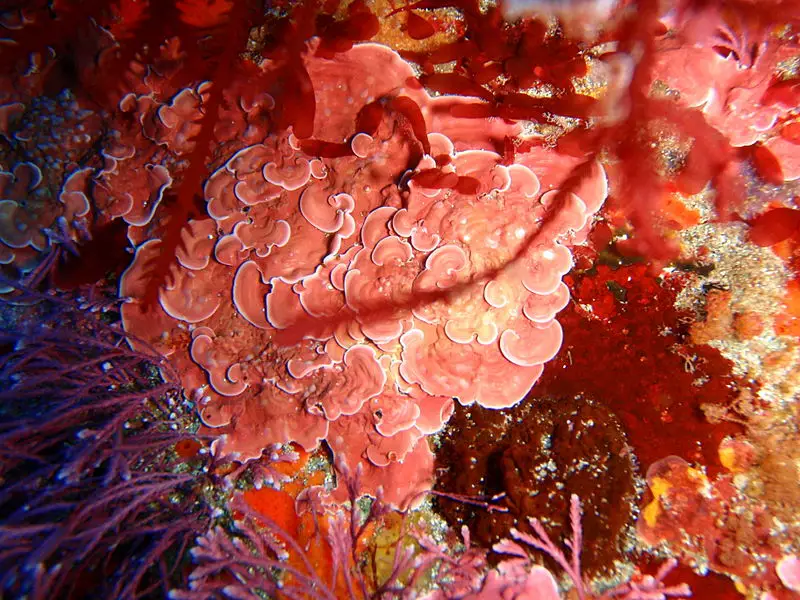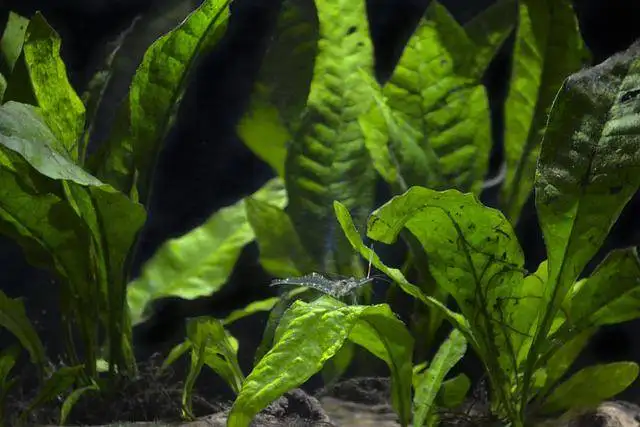Fish keeping is a wonderful hobby that offers endless hours of entertainment. Aquariums are like a little window into another world, and as any sagacious fish keeper knows, monitoring your water quality is the first step to a healthy tank ecosystem.
If you’ve ever noticed a reddish tint to your water, then you’re not alone. Many saltwater tank owners wonder what to do if your aquarium water turns red.
Reddish water is usually a result of red algae, which can build up and harm the wellbeing of your tank. To get rid of the reddish tint, you can add algae eating fish, treat the tank, feed your fish less, and reduce the amount of light in your tank.
There are several reasons your tank may develop a red tint to it, and most of them require quick attention to preserve the health of your tank. The rest of this article will dive into the causes behind red algae, how it may affect your fish, and how to fix it.
How Do I Get Rid of Red Algae in My Fish Tank?
While all aquarium water has some level of algae bacteria, a buildup of these bacterial colonies can have negative effects in a fish tank. There are several reasons for an increased amount of algae.
If your tank is just getting started cycling, then reddish-brown bacteria are more prevalent.
Simply continuing with the cycling process is often enough to allow the bacterial colony to mature and remove the red tint; however, if your tank is already cycled and is developing a reddish tint, it’s likely due to a buildup of waste caused by bacteria.
Conduct a water change and clean out the gravel in the bottom of a tank with a siphon. Wiping any slime off the glass will help improve the look of the tank temporarily, but this is only a superficial fix and won’t address the root cause of the issue.
Regularly cleaning your aquarium filters helps remove any debris that may be preventing the filter from working properly.
Adding cleaner fish like plecos, algae eaters, and snails can reduce the amount of algae in your tank, but if the red coloration is localized to a specific area, then the odds are that your tank is not getting enough water flow in some areas.
A stronger filter can provide better water flow, and removing obstructions can help remove hotspots of bacterial activity. Refugiums, an appendage that shares the same water supply as the main tank, can encourage the development of good bacteria.
Another consideration when attempting to remove red algae from a tank is to establish a day/night cycle where you turn the lights off at night.
Leaving your lights on all the time allows the red algae to grow constantly, while a day/night cycle limits the degree to which the bacteria can utilize photosynthesis. This won’t get rid of red algae, per se, but it’s a good habit to get into for most aquariums anyway.
Reducing how often and how much you feed your fish can also help to get rid of red algae. Any leftover waste will allow the bacteria to feed on the nutrients and grow in number.
There are, of course, antibiotics such as erythromycin, which target and kill this red algae, but if the conditions in your tank are poor, it may only be a matter of time before another algae bloom.
What Does Red Algae Mean in a Fish Tank?
The formation of red algae usually means that you are overfeeding your fish tank, your tank is overcrowded, or you aren’t doing enough water changes. Too much light or too many nutrients in a tank also allow the bacterial colony that makes red algae slime grow faster.
When provided with nutrients in the form of waste products or leftover food, algae is enabled to develop more quickly. The presence of red algae may also mean that your filter is dirty or that your tank needs a water change.
Algae can hide in between the cracks of your gravel or stratum, so a red algae bloom may indicate that the floor of your tank is dirty and needs siphoning.
Is Iron Bacteria Harmful to Fish?
While iron bacteria occur naturally in water, too high of a concentration can be dangerous to your fish. Large amounts of iron bacteria can form those reddish deposits of slime that you may discover in your tank.
While the iron bacteria itself isn’t harmful or toxic, it promotes conditions in your tank that may cause other disease-inflicting organisms to thrive.
How Do You Fix Tannins in a Fish Tank?
If your tank turns a brownish color, then you may be surprised to learn that tannins, not red algae, are a likely culprit. Natural wood like driftwood releases tannins into the tank, which causes the water to take on a murky brown color.
Tannins in moderation are beneficial for your fish, and a more clouded environment will be more natural for your fish. Of course, the reason most people own a tank is to be able to see their fish, so if you want to remove tannins, there are some solutions.
You can remove the driftwood and boil it thoroughly to prevent it from releasing tannins into the water, or use chemicals like purigen to remove tannins entirely.
Conclusion
Fish tanks can take a lot of maintenance, and if you spot a red film appearing on the glass, don’t fret. Red algae by itself isn’t toxic, but you want to address it quickly to avoid promoting the growth of other harmful bacteria.
Cleaning the tank thoroughly, digging through the gravel with a siphon, and rinsing out your filter will all help limit the growth of red algae, and ensuring that you do enough water changes will help to limit conditions that allow red algae to grow.
Hopefully, with the help of this handy-dandy article, you’ll have your water back to crystal clear in no time!



